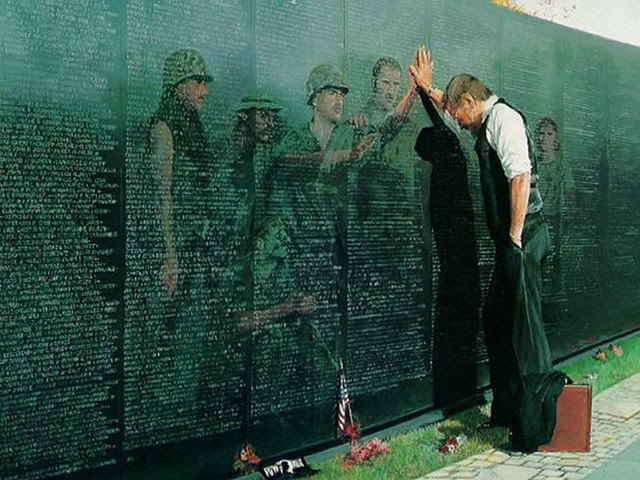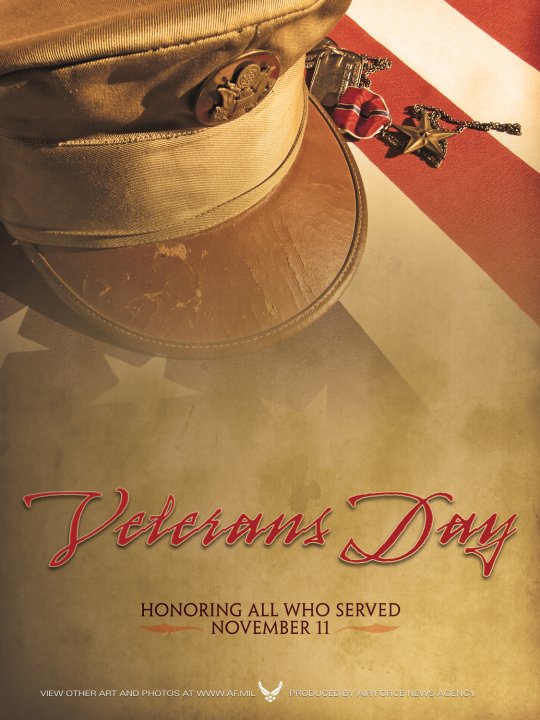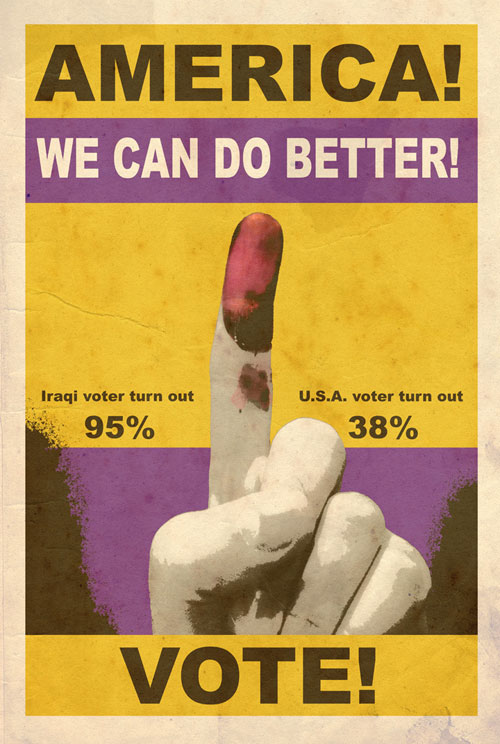By: John Oram of BSN

Veterans Day reminds me of the two times I have been to the Vietnam Veterans Memorial Wall in Washington DC.
Each time I found the seven names of lost comrades I had served with in various units. The name that gave me the most pause was Larry Britten. Larry was my Eagle Scout leader when I was in Boy Scouts. Larry’s younger sister was one of my few friends during high school. Larry was at West Point Military Academy when I was an enlisted man at West Point. Larry was the one who persuaded me that a career in the military would not make me a happy camper.
Veterans Day reminds me of the many trips to the north-east corner of the State Capitol grounds, beside the State Capitol in Sacramento, and the memorial to California Vietnam Veterans Memorial. Each city, town and village in California has the names of those that gave their lives during the Vietnam Era fighting. The driving “force” to get the memorial built was B.T. Collins, a well-known figure in California government (and a former Special Forces Captain, who lost a leg and an arm in Vietnam). B.T. was also the driving force for the B.T. Collins “Captain Hook” Scholarship at Santa Clara University.
Being a Veteran means you have pledged to:
“I do solemnly swear (or affirm) that I will support and defend the Constitution of the United States against all enemies, foreign and domestic; that I will bear true faith and allegiance to the same; and that I will obey the orders of the President of the United States and the orders of the officers appointed over me, according to regulations and the Uniform Code of Military Justice. So help me God.” (Title 10, US Code; Act of 5 May 1960 replacing the wording first adopted in 1789, with amendment effective 5 October 1962).”
Being a Veteran means you sacrificed your time, energy and were willing to sacrifice your life so fellow citizens can remain free of those burdens. Today’s military is made up of 100% volunteers, they are the less than one percent who are following the orders of our civilian government to do their duty as ordered.
It is up to those of us who are no longer or have not been in the military to directly voice our views to the civilian government officials as to how our military volunteers should be used to defend our nation.
We should all take one minute to silently remember all those that are in the military and especially those who are in a combat zone. Take a moment to reflect on the wounded military veterans who will live the rest of their lives with the physical and emotional scars from their service for us. And another one minute to remember those that have given the ultimate sacrifice of their lives to protect the nation we are citizens of.

History of Veterans Day
In 1919, President Woodrow Wilson proclaimed November 11 as Armistice Day to remind Americans of the tragedies of war. The fighting in World War I had ended a year earlier, at 11 A.M., November 11, 1918 (the eleventh hour of the eleventh day of the eleventh month).
Two years later on Armistice Day, an unknown American World War I soldier was buried at Arlington National Cemetery in Washington, D.C., in the Tomb of the Unknowns. Thousands of people came to watch the elaborate ceremonies that took place. Similar ceremonies had taken place the previous year in England and France: an unknown English soldier was buried in Westminster Abbey in London, and an unknown French soldier was buried at the Arc de Triomphe in Paris.
In 1926, Congress passed a resolution calling for the observance of Armistice Day in schools, churches, and other suitable places. Twelve years later the day was designated as a national holiday. In 1939, a year after Armistice Day became a national holiday, World War II broke out in Europe. The start of this war ended the idealistic hopes that World War I was “the war to end all wars.” Over four hundred thousand American troops died in World War II.
After the Korean War (1950–1953), during which over 36,000 Americans died, Congress considered making Armistice Day a day to commemorate veterans of all wars, not only those who served in World War I. In 1954, President Eisenhower signed a bill proclaiming the holiday a remembrance of all wars and changing its name to Veterans Day.
A law passed in 1968 moved the Veterans Day celebration to the fourth Monday in October. However, the original date, November 11, was historically significant to many Americans, and ten years later the observation of Veterans Day returned to its original date. (Now it is often observed on the Monday or Friday closest to the 11th, like today.)
In 1958, two more unidentified American soldiers were laid to rest next to the unknown soldier of World War I. One of the soldiers was killed in World War II, and the other in the Korean War. In 1984, a fourth unknown serviceman was added to the tomb. He had died in the Vietnam War. However, in 1998, the identity of the Vietnam War soldier was discovered through DNA testing, and his remains were returned to his family. The crypt reserved for the unknown soldier from the Vietnam War is now empty.
Veterans Day celebrations include parades and speeches held in towns and cities throughout the United States. The focal point for national ceremonies, however, continues to be the Tomb of the Unknowns in Arlington National Cemetery and the amphitheater surrounding it. Every year, special services begin at 11 A.M. with two minutes of silence. After the playing of “Taps,” the president places a wreath at the tomb. A color guard procession and several speeches, one of them usually by the president, follow it. Approximately 5,000 people attend the ceremony annually.
Today marks the anniversary of the armistice that ended World War I, a day now known in the U.S, as Veterans' Day. I never served in the military, for which I am sure they are thankful. Like many others, I certainly have not approved of all the military adventures in which our nation has participated, but I honor those who have served. On this day I say, "Thank you!"
“However horrible the incidents of war may be, the soldier who is called upon to offer and to give his life for his country is the noblest development of mankind.” …General Douglas MacArthur, 1880 – 1964
Canine Military Hero
Read: (and See Below) the Great Story of Nubs the Dog and His Marine
Video: Nubbs: The True Story of a Mutt, a Marine, and a Miracle
Nubs: The True Story of a Mutt, a Marine & a Miracle – Get Book
Heart-Wrenching Image: Dog Keeps Watch Over Fallen Seal’s Casket During Funeral
Update: Retired Disabled Military Dog Rocky Has Been Saved
The Dog that Cornered Osama Bin Laden
Arizona Worker Fired For Euthanizing War Hero Dog – Is It Enough?
The Watcher’s Council Has Spoken: This Week’s Watcher’s Council Results Released on 11.11.11
Ask Marion – h/t to the NoisyRoom and Just One More Pet







![clip_image001[4] clip_image001[4]](https://blogger.googleusercontent.com/img/b/R29vZ2xl/AVvXsEiaSqjR792RikzCfWzSyyfnYcz5-cy-9ZIS85oAxdkc1HtdWfTlbBTZ-2Lo1H84Fdy1g2AIUz84HKSKpP7y7wooPqt13YrUKnYnYlxoQCot-op-nST6IPUjmbKoQflfpqHBW3BdIXjad2iH/?imgmax=800)
![clip_image001[6] clip_image001[6]](https://blogger.googleusercontent.com/img/b/R29vZ2xl/AVvXsEihd1KrXnUXnZwv243XVF_pORujVcBmxXr464FajAUKCu9UbwdrWVhJFYqVIJV74AiAgBWSkiB5Uzyrp2ZPZ13LYN3p4KJve-a8LLaYnjg0creM99cH3S_Ujehc9d0MRjRxgaRGT_SlHRyN/?imgmax=800)















No comments:
Post a Comment